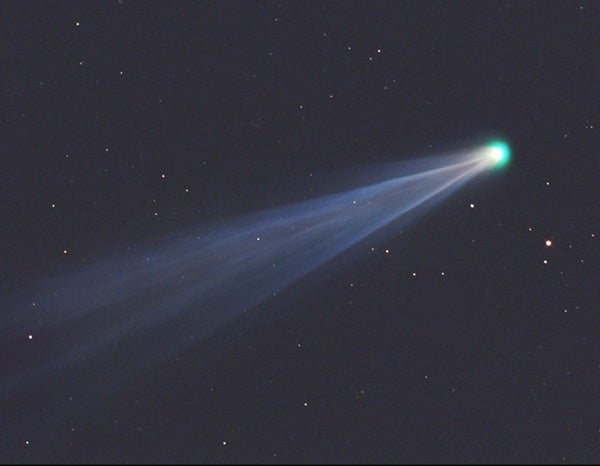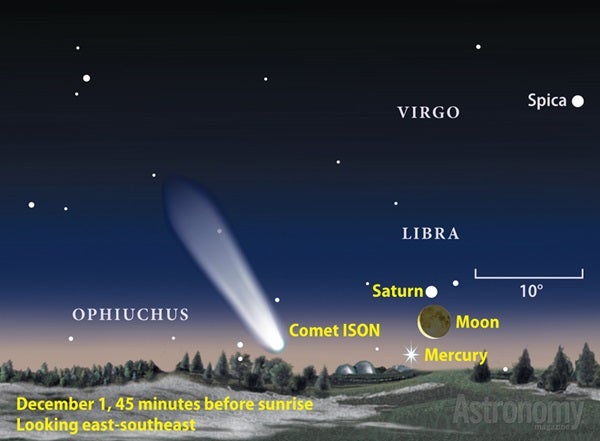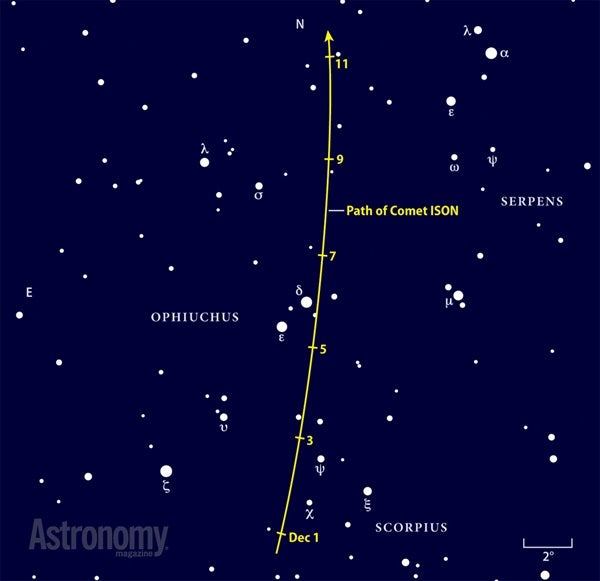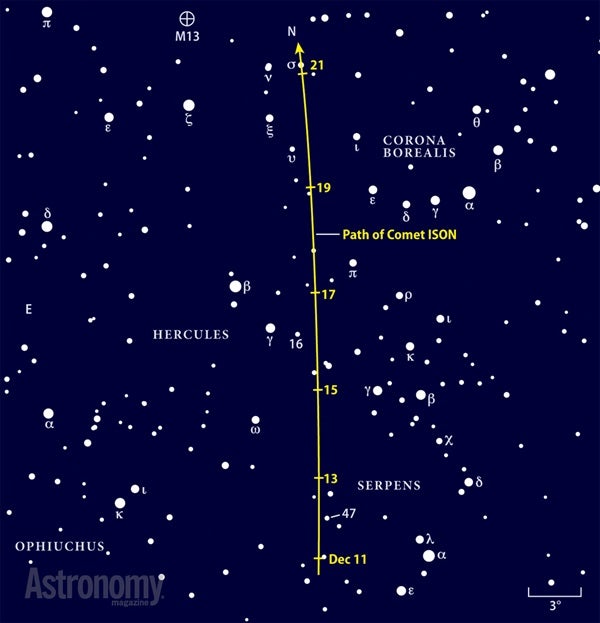UPDATE: “Comet ISON may have survived“
As December dawns, the nucleus of Comet ISON (C/2012 S1) should be seething with activity. Just three days removed from its November 28 perihelion — when the comet skimmed within 730,000 miles (1.16 million kilometers) of the Sun’s surface — ISON will be bathed in a sea of solar radiation. The heat will warm the dirty snowball’s surface, causing the ices there to turn directly to gas, or sublimate. The erupting gases will liberate dust particles as well. The amount of gas and dust emitted by ISON will determine how bright it appears in early December.
For complete coverage of Comet ISON, visit www.Astronomy.com/ISON.
On the 1st, the comet’s head pokes above the horizon during morning twilight, approximately 40 minutes before sunrise from sites at mid-northern latitudes. Because the comet’s tail points away from the Sun, it rises even earlier. Find a location with a low eastern horizon uncluttered by trees or buildings and be ready to observe at least an hour before the Sun comes up. Start your search through binoculars; once you locate ISON, see what your eyes alone show.
The comet then lies roughly 15° (the span of your outstretched hand when held at arm’s length) to the left of a trio of other solar system objects: Mercury, Saturn, and a slender crescent Moon. If predictions by the Minor Planet Center of the International Astronomical Union pan out, ISON should be glowing at around 2nd magnitude, a few times dimmer than Saturn.
By December 4, the comet’s coma rises about 75 minutes before the Sun and appears some 5° high in the east a half-hour later. That morning, ISON forms a near isosceles triangle with Mercury, which lies some 13° to the comet’s left, and Saturn, which stands 12° above Mercury. Although the comet should appear a couple of magnitudes fainter than the ringed planet, all should show up nicely through binoculars.
Two days later, on the 6th, look for ISON just 0.5° west of magnitude 2.7 Delta (δ) Ophiuchi. The comet then rises shortly before morning twilight commences, so it should stand out much better.
As the first half of December wraps up on the 15th, ISON should glow around 6th magnitude. That is just bright enough to spy with naked eyes under a dark sky, though binoculars will deliver better views. That morning, the comet leaves Serpens behind and enters the splashier constellation Hercules, which sets it up for a close pass by the bright globular star cluster M13 in the week before Christmas. Assuming ISON continues to live up to astronomers’ expectations, the impressive show should continue to at least the end of the year.













